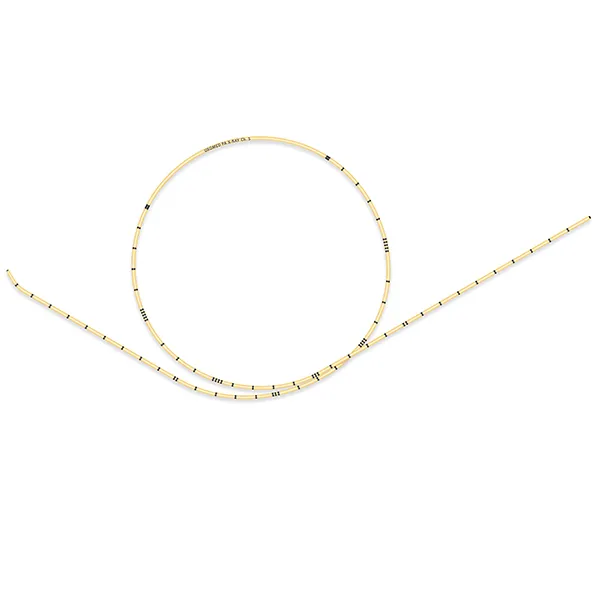Ureteral catheters are typically made of soft, flexible materials such as silicone or polyurethane to ensure easy insertion into the ureter without causing damage to the sensitive tissues of the urinary tract. These catheters are usually narrow and feature openings at the tip to facilitate proper urine flow and drainage. Some ureteral catheters include a small loop at the end to help secure the catheter in place, preventing accidental displacement or removal.
Types of Ureteral Catheters
Double J Stent Catheters:
These catheters have two curved ends resembling the letter “J.” One loop is positioned in the kidney and the other in the bladder, ensuring the catheter stays in place and provides continuous urine drainage.
Straight Catheters:
Designed for short-term use, these catheters are typically used in temporary situations requiring brief catheter placement.
Nelaton Catheters and Diagnostic Ureteral Catheters:
These are used for examining the urinary tract and diagnosing potential issues, such as obstructions.
Sizes
Ureteral catheters are available in various sizes, measured in “French” (Fr) units, typically ranging from 4 to 8 Fr. The appropriate size is determined by the patient’s age, ureter size, and the underlying condition, as prescribed by the physician.
Applications
Urine Drainage in Ureteral Obstruction: Used for patients with kidney stones or ureteral strictures.
Post-Urological Surgery: Ensures proper urine drainage after urinary tract surgeries.
Assisting in Treating Urinary Tract Infections: Helps prevent obstruction and improves urine flow.
Ureteral catheters are essential tools in urology and urinary tract surgeries, aiding in urine drainage and reducing kidney pressure. With various types, including double J stents and diverse sizing options, these catheters facilitate the treatment of urinary tract issues and improve patient quality of life.



Reviews
There are no reviews yet.